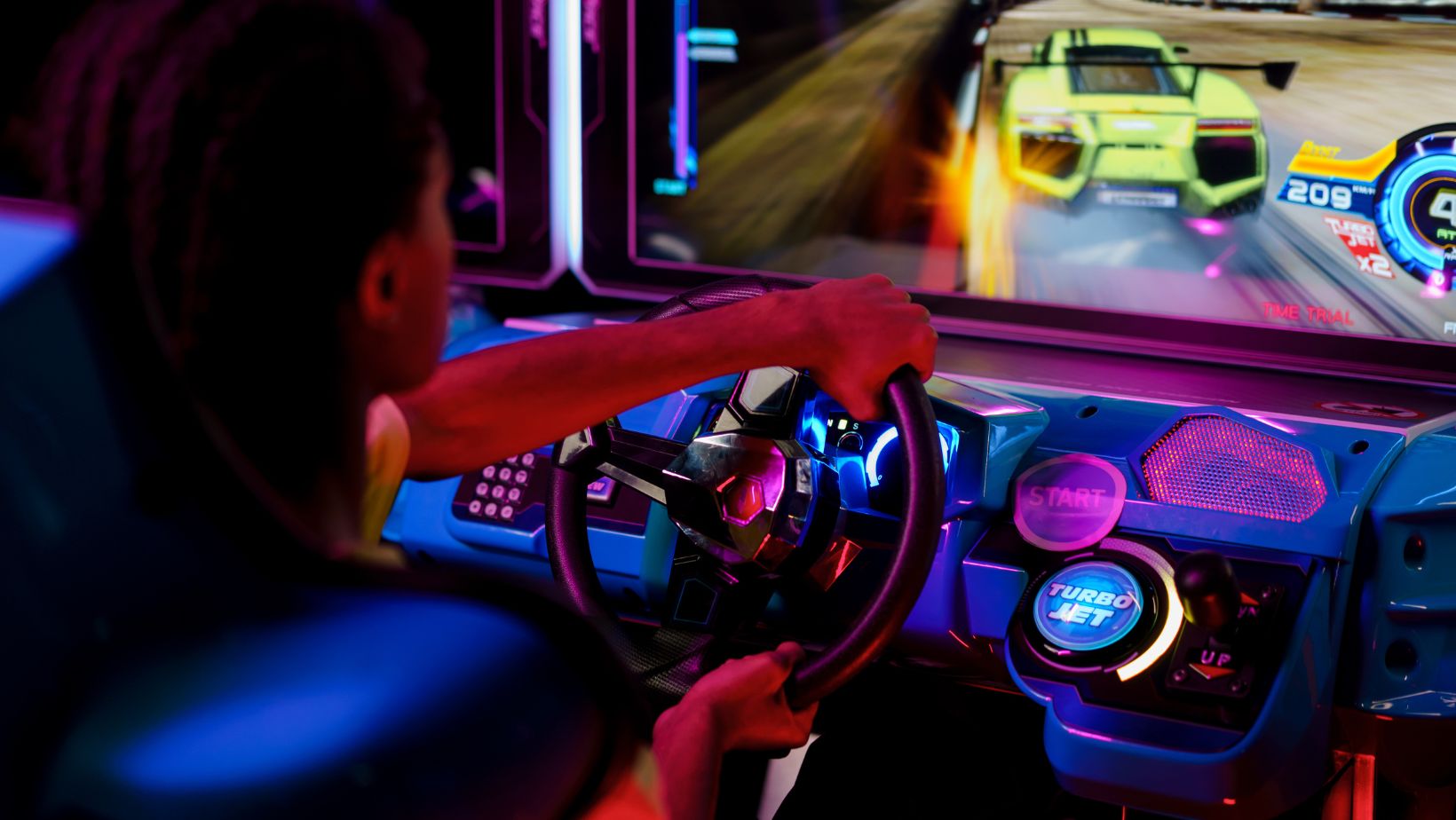Key Takeaways
- Revolutionizing Motorsport: Digital racing solutions are transforming the motorsport industry through enhanced performance analysis, real-time telemetry, and virtual simulations.
- Data-Driven Decisions: Teams utilize advanced data analytics to evaluate performance metrics, optimize strategies, and improve driver skills for competitive advantages.
- Improved Collaboration: Seamless communication among team members, facilitated by centralized data platforms, fosters collaborative efforts and informed decision-making during races.
- Emerging Technologies: Future advancements include AI, machine learning, and augmented reality, which will continue to reshape performance analysis and enhance fan engagement.
- Challenges in Adoption: Implementation faces hurdles such as technical barriers and high costs, particularly affecting smaller teams seeking to integrate sophisticated technologies.
In an era where technology transforms every aspect of life, digital racing solutions are revolutionizing the motorsport industry. These cutting-edge tools enhance everything from performance analysis to fan engagement, creating a more immersive experience for both drivers and spectators. As the demand for innovation grows, racing teams and organizations are turning to digital platforms to gain a competitive edge.
Digital racing solutions encompass a wide range of applications, including data analytics, virtual simulations, and real-time telemetry. By leveraging these technologies, teams can make informed decisions, optimize strategies, and improve overall performance on the track. As the digital landscape continues to evolve, the future of racing looks more exciting than ever, promising thrilling advancements that will redefine how fans and athletes experience the sport.
Digital Racing Solutions
Digital racing solutions leverage advanced technologies to revolutionize motorsport. Key components include data analytics, which provides insights into performance metrics; virtual simulations, which create realistic racing environments for training and strategy; and real-time telemetry, which tracks vehicle data during races.
Data Analytics
Data analytics enables teams to collect, analyze, and interpret large volumes of data. Analytics tools evaluate metrics such as lap times, tire wear, and fuel consumption. By identifying trends, teams optimize race strategies and driver performance.
Virtual Simulations
Virtual simulations offer immersive training experiences. Teams utilize high-fidelity models to replicate racing scenarios, testing different strategies and setups. Simulators help drivers prepare for diverse conditions, enhancing skill development and decision-making.
Real-Time Telemetry
Real-time telemetry provides crucial information during races. Systems transmit vehicle data to engineers, allowing for immediate adjustments. This dynamic feedback loop enhances performance by enabling quick responses to changing track conditions or vehicle behavior.
Future Advancements
As digital racing solutions progress, they promise further enhancements in performance and engagement. Innovations in artificial intelligence and machine learning will refine analysis processes. The integration of augmented and virtual reality will deepen fan interactions, transforming the spectator experience.
Digital racing solutions represent a significant shift in how teams approach motorsport. Technology continues to drive competitiveness, shaping the industry’s future in unprecedented ways.
Benefits of Digital Racing Solutions
Digital racing solutions offer numerous benefits that enhance both team performance and fan engagement. These technologies streamline operations and provide valuable insights into various aspects of racing.

Enhanced Performance Tracking
Enhanced performance tracking is a key advantage of digital racing solutions. Teams utilize advanced data analytics to monitor critical metrics such as lap times, tire wear, and fuel consumption. Real-time analytics enable instant performance evaluations, allowing teams to modify strategies during events. Continuous feedback loops assist engineers in making adjustments to vehicle setups, improving overall competitiveness. Furthermore, predictive modeling employs historical data, helping teams anticipate potential issues before they arise.
Improved Team Collaboration
Improved team collaboration is another significant benefit. Digital racing solutions foster seamless communication among team members, including drivers, engineers, and strategists. Centralized data platforms ensure that everyone accesses the same information in real-time, promoting informed decision-making. Collaborative tools streamline the sharing of insights, allowing teams to synchronize efforts more effectively. Virtual meetings and simulations facilitate remote collaboration, while advanced telemetry systems ensure that drivers receive timely updates and advice during races.
Types of Digital Racing Solutions
Digital racing solutions encompass a variety of technologies that enhance performance and strategy in motorsport. The following sections highlight key types of digital racing solutions, providing insights into their functionalities and benefits.
Simulation Software
Simulation software plays a crucial role in digital racing solutions by creating realistic virtual environments for training and strategy development. It allows drivers to practice in diverse track conditions, enhancing their adaptability. Teams utilize this software to analyze vehicle dynamics and test various setups without risking physical assets. Popular platforms like iRacing and Assetto Corsa deliver accurate simulations that help teams refine their racing techniques and improve driver confidence.
Real-Time Data Analytics
Real-time data analytics provides immediate insights into vehicle performance during races. It captures critical metrics, such as speed, tire pressure, and fuel consumption, enabling teams to make instant adjustments. This technology supports predictive analysis, granting teams the ability to anticipate and resolve potential issues before they escalate. By leveraging tools like MATLAB and Telemetrix, teams can analyze trends and optimize strategies, fostering a competitive edge on the track.
Challenges in Implementing Digital Racing Solutions
Implementing digital racing solutions presents various challenges. Teams often face technical barriers and significant cost considerations that can hinder effective adoption.
Technical Barriers
Technical barriers significantly impact the integration of digital racing solutions. Compatibility issues between existing hardware and new technologies can create setbacks. Teams may encounter difficulties in data interoperability, where different systems struggle to communicate effectively. Additionally, a lack of skilled personnel proficient in advanced technologies poses a challenge, as teams require expertise in data analytics, simulation software, and real-time telemetry systems. Cybersecurity risks also heighten concerns, as the digital infrastructure becomes more attractive to cyber threats, necessitating robust security measures to protect sensitive data.
Cost Considerations
Cost considerations play a crucial role in the adoption of digital racing solutions. Initial investments for advanced technologies like simulation software and data analytics tools can be substantial. Ongoing expenses for maintenance, software updates, and data storage also contribute to the overall budget. Smaller teams often struggle to allocate funds for such extensive technological upgrades, raising concerns about financial sustainability. Furthermore, the potential for return on investment remains uncertain, making it challenging for team managers to justify these expenditures without guaranteed performance improvements.
Future Trends in Digital Racing Solutions
Emerging trends in digital racing solutions focus on significant advancements poised to revolutionize the motorsport industry.
- Artificial Intelligence Integration: Artificial intelligence (AI) enhances decision-making through data analysis. AI algorithms interpret vast amounts of data, offering insights that streamline strategy development and optimize vehicle performance during races.
- Machine Learning Applications: Machine learning improves predictive analytics, enabling teams to forecast performance outcomes based on historical data. This predictive ability aids in anticipating mechanical failures or optimizing tire and fuel management.
- Augmented Reality Experiences: Augmented reality (AR) offers innovative fan engagement opportunities. With AR applications, fans can experience real-time information about drivers, vehicles, and race dynamics, enriching the viewing experience during live events.
- Blockchain Technology: Blockchain enhances data security and integrity. It ensures that telemetry data and performance metrics remain tamper-proof, fostering trust among stakeholders, including teams, sponsors, and fans.
- Enhanced Telemetry Systems: Advanced telemetry solutions transmit data at higher speeds and with greater accuracy. These improvements allow teams to make real-time adjustments to vehicle performance based on immediate race conditions.
- Data Interoperability Solutions: Data interoperability aids communication between various digital platforms. Teams utilizing different software systems can collaborate more effectively by ensuring data is easily accessible across platforms.
- Sustainability Integration: Sustainability trends push for green technology in racing. Implementing eco-friendly practices, such as electric vehicles and efficient fuel strategies, aligns with global efforts to combat climate change.
- Virtual Reality Training: Virtual reality (VR) training tools become more prevalent, providing immersive environments where drivers can refine skills under simulated conditions. These tools enhance safety and preparation for real-world challenges.
- Cloud Computing Utilization: Cloud computing streamlines data storage and accessibility. Teams can analyze data in real-time from any location, fostering immediate collaboration and decision-making.
- Collaboration with Tech Companies: Partnerships between racing teams and technology firms drive innovation. Collaborations facilitate access to cutting-edge research and resources, allowing teams to stay ahead in competitive landscapes.
These future trends indicate a dynamic shift towards integrating sophisticated technologies in digital racing solutions. As these advancements materialize, they’ll redefine team strategies, improve performance, and enhance the overall fan experience in motorsports.
Enhance Performance And Engagement
Digital racing solutions are reshaping the motorsport landscape by leveraging technology to enhance performance and engagement. As teams adopt advanced analytics and simulation tools, they gain a competitive edge that drives innovation. The integration of artificial intelligence and machine learning promises to further elevate decision-making processes and predictive capabilities.
While challenges exist in implementation and cost, the potential benefits far outweigh the hurdles. Teams that embrace these digital advancements are better positioned to navigate the complexities of modern racing. As the industry evolves, the collaboration between racing teams and technology providers will be crucial in unlocking new possibilities and redefining the motorsport experience for fans and athletes alike. The future of racing is not just about speed; it’s about smart strategies powered by cutting-edge technology.


